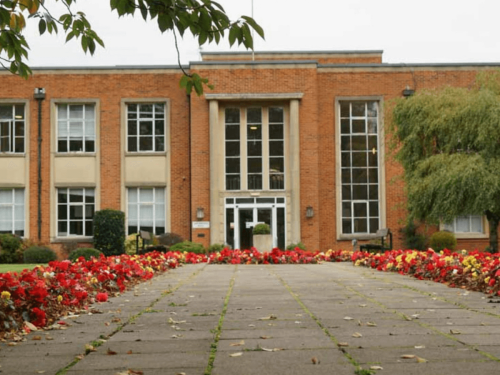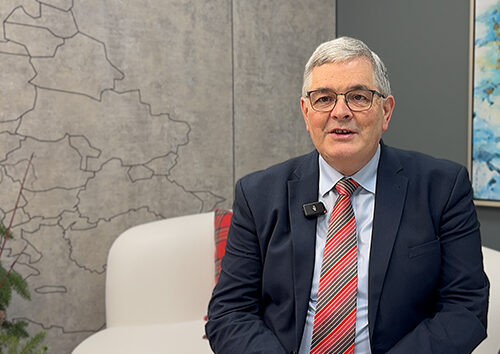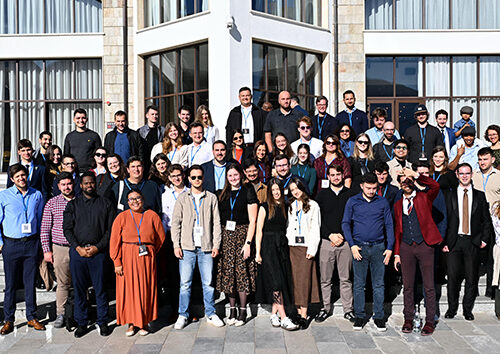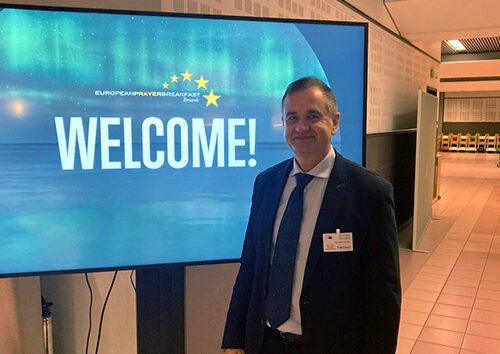27 October 2021 | Binfield, UK [David Neal with Helen Pearson]
The importance of ‘Exploring Faith and Community Through Christian-Muslim Dialogue’ was highlighted within three days of this year’s Beach Lecture.
British MP, Sir David Anthony Andrew Amess, was murdered while holding his constituency surgery in Leigh-on-Sea – allegedly by a ‘British national of Somali heritage.’ A statement from his heartbroken family requested “people to set aside their differences and show kindness and love to all” as the “only way forward”, regardless “of one’s race, religious or political beliefs.” The tragic Essex murder was a timely but brutal example of the need for people of all faith communities and none to foster a greater mutual understanding.
Newbold’s annual Beach lecture was endowed in 1998 by Doctor Bert and Mrs Eliane Beach who were committed to ‘bridgebuilding’ during their ministry in the Seventh-day Adventist Church. This year’s lecture saw two inter-faith specialists share their stories – one Christian and one Muslim.
Doctor Lia Shimada, Senior Researcher for the Susanne Wesley Foundation and Associate Chaplain of Whitelands College, University of Roehampton, has dedicated her mediation work to bringing people to understand ‘the other’, through peacebuilding within communities.
Shimada began the lecture by providing a framework of questions for effective dialogue between different faith communities. “What is our understanding of the presence of God in the world? Can Jewish, Christian, and Muslim communities find occasion to come together around the table to marvel at the mystery of God with an attitude of open-minded curiosity? And then perhaps for individual reflection, does our relationship to the sacred text we hold dear and trust implicitly, change and mature over the years?”, Shimada invited the audience to ponder.
As 19.5 million refugees and 272 million migrants (UN figures), move around the world, Shimada wondered what happens as they take their faith and social traditions with them. He believes these figures highlight the critical need to understand ‘the other’. Shimada suggested that, just as leading religious leaders convene together for formal interfaith dialogue, there is a need for grass-root conversations that will pave the way to better mutual understanding.
The evening’s second speaker, Imam Hassan Rabbani, is the Muslim chaplain at Heriot Watt University, Edinburgh. He is a Scottish Muslim scholar with a deep commitment to inter-faith work.
When “Christian-Muslim dialogue is seen through a lens of animosity, tension, and crusades”, explained Iman Rabbani, “we fail to see the many more peaceful encounters that have taken place.” Sharing three pre-Middle Ages examples, Rabbani emphasised the extent to which Muslim faith often affirmed Christian values. He believes that UK Muslims need to connect with their country’s Judeo-Christian heritage, particularly as Islam has ‘preserved’ much ‘about Christ’.
“Is it possible that today’s Muslim leaders and their communities, living both in the East and the West, can find the same kind of freedom as was the experience of some early Muslims?”, Rabbani pondered. “Mohamed was generous,” he said.
Rabbani recognised that encouraging inter-faith dialogue inevitably leads, both Christians and Muslims, to fear a ‘dilution of their own faith’ – a matter raised further in the subsequent Q & A section. “Is my faith so weak that the minute I step into a church, I lose everything I have ever believed?”, he questioned. “Far from it,” responded Shimada. “Inter-faith conversation… has been an amplifying experience… I would like to see people having the courage to take an initiative.”
tedNEWS Staff: Victor Hulbert, editor; Vanesa Pizzuto, associate editor
119 St Peter’s Street, St Albans, Herts, AL1 3EY, England
E-mail: [email protected]
Website: www.ted.adventist.org
tedNEWS is an information bulletin issued by the communication department of the Seventh-day Adventist Church in the Trans-European Division. Readers are free to republish or share this article with appropriate credit including an active hyperlink to the original article.



